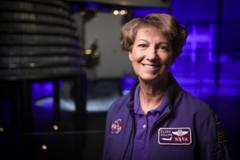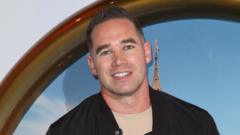How Did NASA's First Female Space Commander Overcome Doubts About Her Leadership?

Published: 2025-10-21 03:00:32 | Category: technology
Eileen Collins is a pioneering astronaut who made history as the first woman to pilot and command a spacecraft, breaking barriers in a male-dominated field. Her remarkable journey, detailed in the documentary "Spacewoman," highlights her determination and resilience. This article explores her life, achievements, and lasting impact on space exploration.
Last updated: 29 October 2023 (BST)
Key Takeaways
- Eileen Collins was the first female pilot and commander of a spacecraft.
- She joined the military to become a test pilot, paving her way to NASA.
- Collins faced the challenges of motherhood while pursuing her astronaut career.
- She overcame significant risks during her missions, including a critical foam strike incident.
- The documentary "Spacewoman" aims to raise awareness of her contributions.
Early Aspirations and Military Career
Eileen Collins was born on 19 November 1956 in Elmira, New York. From a young age, she was captivated by the idea of space travel. At nine years old, she read about the Gemini astronauts and decided she wanted to become an astronaut, despite there being no female role models in the field at the time.
Collins took the unconventional route of joining the United States Air Force, where she excelled as a test pilot. Her military training and experience made her an ideal candidate for NASA’s astronaut programme. In 1990, she was selected as part of NASA’s 14th astronaut class, marking a significant milestone in her career.
Breaking Barriers as a Space Shuttle Pilot
Collins made history on 23 July 1999 when she piloted the Space Shuttle Columbia on the STS-93 mission, becoming the first woman to command a NASA space shuttle. This moment was not just a personal achievement; it was a symbol of progress for women in science, technology, engineering, and mathematics (STEM) fields.
Her Approach to Command
Throughout her career, Collins was conscious of the expectations placed upon her as a female leader. She worked diligently to demonstrate that women could perform at the highest levels in aviation and space exploration. “I didn’t want people to say, ‘Oh look, the woman has made a mistake.’ It was about the women who would follow me,” she recalled.
Family Life and Responsibilities
Balancing her roles as a commander and a mother was no small feat. Collins had two young children at home while pursuing her career at NASA. In interviews, she often emphasised that being a parent was more challenging than being a space shuttle commander. “The best training I ever had for being a commander was being a parent,” she said, reflecting on the skills required to manage responsibilities and expectations.
Her ability to navigate the complexities of professional and personal life has inspired many women to pursue ambitious careers while managing family responsibilities. Collins proved that it is possible to excel in both arenas, setting a precedent for future generations.
The Challenges of Space Exploration
Collins’s career was not without its challenges. The Space Shuttle programme faced significant tragedies, including the Challenger disaster in 1986 and the Columbia disaster in 2003. These events cast a shadow over the programme and weighed heavily on the minds of astronauts like Collins.
Confronting Adversity
After the Columbia disaster, Collins was chosen to command the next mission, STS-114, which launched on 26 July 2005. This mission was crucial to restoring confidence in the shuttle programme. During the launch, a piece of foam insulation broke away from the external tank, akin to the circumstances that led to the Columbia tragedy. However, Collins and her team had a contingency plan in place.
She executed a 360-degree flip to allow engineers on the International Space Station to inspect the shuttle's heat shield. Despite pressure from her team and the inherent risks, Collins maintained her composure. “I said: 'It sounds like we can do it,'” she recounted. Her leadership during this critical moment is a testament to her character and capabilities as a commander.
Retirement and Legacy
After completing her fourth mission, Collins decided to retire from NASA. She felt it was important to give others the opportunity to experience space travel. Reflecting on her career, she expressed no regrets about her decision. “I wanted to give other astronauts the chance to go to space,” she noted.
Collins’s legacy is not just in her achievements but in the doors she opened for women in aerospace. She has become a role model for aspiring astronauts and a prominent advocate for women in STEM fields. The documentary "Spacewoman" aims to bring her story to a wider audience, ensuring that her contributions are recognised and remembered.
Advice for Future Generations
When asked what advice she would give to young individuals aspiring to follow in her footsteps, Collins emphasised the importance of education. “Do your homework, listen to your teacher, pay attention in class and read books,” she advised. Her pragmatic approach highlights the significance of a strong educational foundation in achieving one’s dreams.
Looking to the Future
Even after retiring, Collins’s passion for space exploration remains evident. When asked if she would consider flying again if given the opportunity, she replied, “Yes, I would love to go on a mission someday.” This sentiment reflects her enduring commitment to the field and her belief in the importance of exploration.
As the world continues to push the boundaries of space travel, Collins's story serves as an inspiration. Her achievements remind us that the pursuit of knowledge and adventure is not limited by gender and that the sky is not the limit, but rather a stepping stone to greater heights.
FAQs
Who is Eileen Collins?
Eileen Collins is a retired NASA astronaut who made history as the first woman to pilot and command a spacecraft. She had a distinguished career, including several missions aboard the Space Shuttle.
What is the documentary "Spacewoman" about?
"Spacewoman" chronicles the life and achievements of Eileen Collins, highlighting her trailblazing role in aviation and space exploration. It aims to raise awareness of her contributions to the field.
What challenges did Eileen Collins face during her career?
Collins faced numerous challenges, including the pressure of being a female leader in a male-dominated field, balancing motherhood with her career, and dealing with the tragedies of the Space Shuttle programme.
What advice does Eileen Collins offer to aspiring astronauts?
Collins advises young people to focus on their education, listen to their teachers, and read extensively to prepare for a future in space exploration or any ambitious career.
What was Eileen Collins's role after the Columbia disaster?
After the Columbia disaster, Collins commanded the STS-114 mission, implementing safety protocols and demonstrating leadership during a critical mission for NASA.
As we look towards the future of space exploration, Eileen Collins’s legacy is a reminder that determination and perseverance can break through any barrier. What new heights will the next generation of astronauts achieve? #EileenCollins #SpaceExploration #WomenInSTEM



